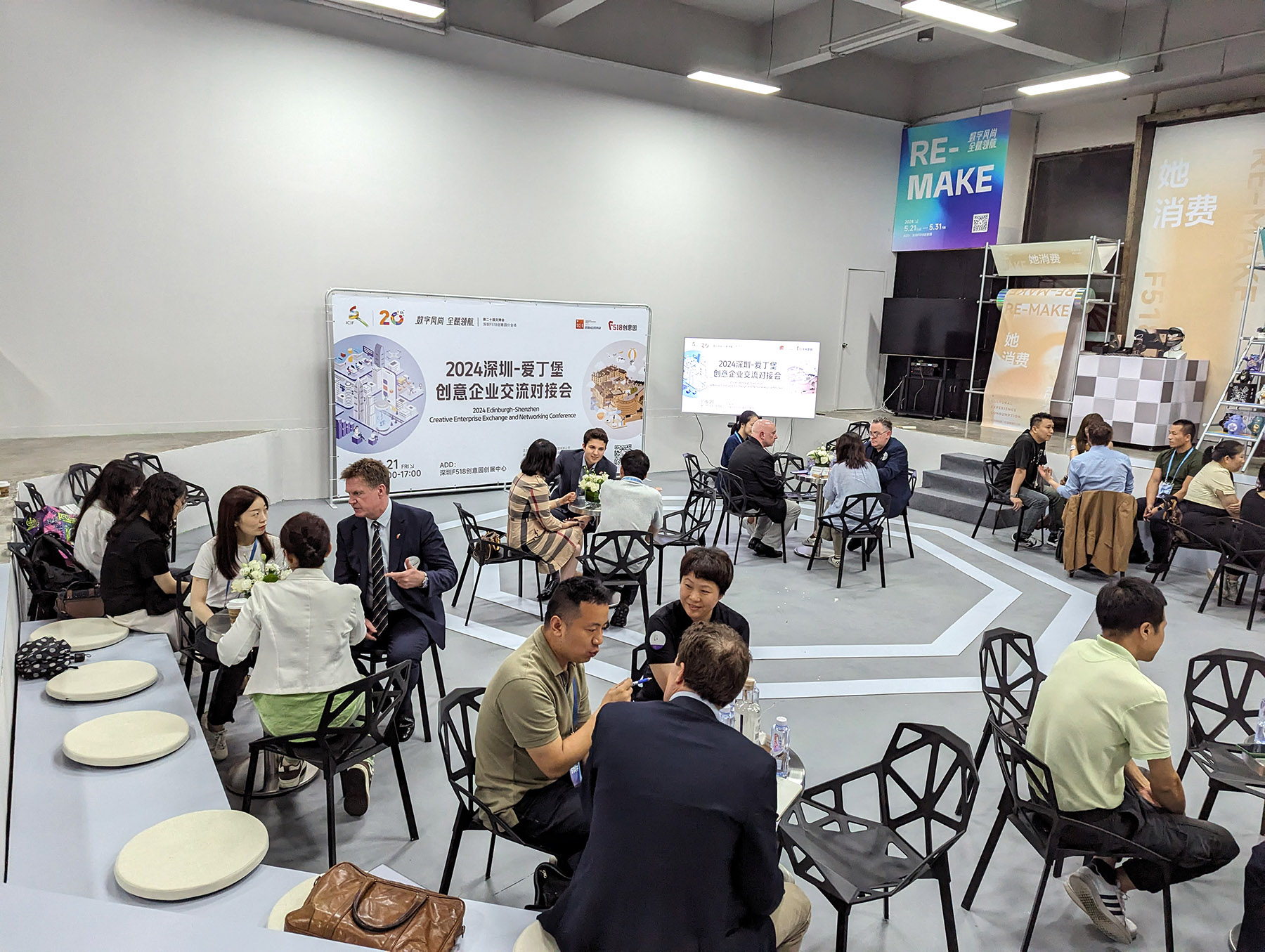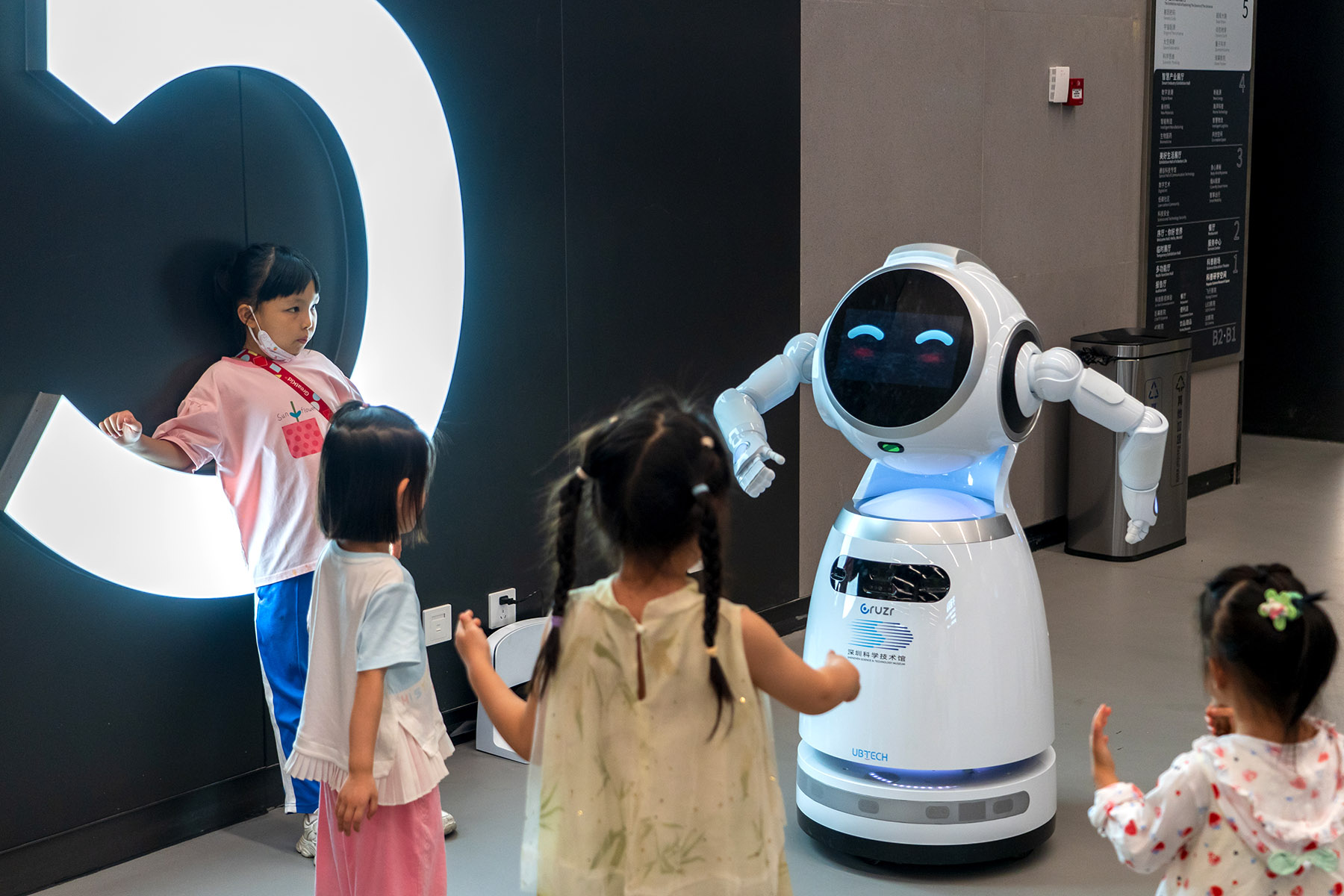Sister-city partnership between Shenzhen and Edinburgh grows amid common quest of innovation, business, culture

Editor’s note: Amity between people holds the key to sound state-to-state relations. A China Daily series highlights Chinese cities’ special connections with sister cities, mutual understanding, trust, and friendship between people of different countries and cultural backgrounds, and shining light on “city diplomacy”.
In a trip that melded ancient castles with modern architecture, haggis with dim sum, and the skirl of bagpipes with the hum of electric vehicles, the Lord Provost of Edinburgh Robert Aldridge found a fascinating story in Shenzhen. It was one of shared ambition, entrepreneurial and innovative drive, and a dedication to preserving culture.
“Brilliant and fascinating trip,” Aldridge wrote on X after he accompanied a trade delegation to Shenzhen, Guangdong province, in May last year.
At first blush, Edinburgh and Shenzhen may seem like a total mismatch — one a sprawling, sun-drenched technology hub, the other windswept and soaked in history — yet a closer look makes them look more like siblings. Both the cities are open, vibrant, inclusive, and innovative, qualities rooted in their knack for breaking the mold and bringing out the new.
Shenzhen was a testing ground for China’s reform and opening-up, and in 1980 was designated one of the country’s first special economic zones. Since then it has transformed itself from a small fishing village to a center of manufacturing, technology, finance, and trade, its GDP last year being 3.68 trillion yuan ($510 billion).
The city is often called China’s Silicon Valley, and companies such as Tencent, Huawei, and BYD, now global household names, were founded there.
This model of modernity and progress is now again at the forefront of China’s efforts to further open up as Shenzhen leads the development of the Guangdong-Hong Kong-Macao Greater Bay Area.
In Edinburgh, too, the spirit of innovation is deep rooted, the blossoming shoots of that being its prowess in financial services, software engineering, data science, and renewable energy, said Jim Galloway, founding director of the consultancy Edinburgh Global Ltd and a former head of enterprise and innovation with the City of Edinburgh Council.
The Scottish Enlightenment of the 18th century produced intellectuals such as Adam Smith, the father of modern economics, who revolutionized the idea of society, trade, religion, and more, and Edinburgh was widely called the Athens of the North, Galloway noted.
Donald Wilson, a former lord provost of Edinburgh, talked of Edinburgh’s reputation as a festival city, with 11 major international festivals taking place there last year.
The Edinburgh Festival Fringe last year featured more than 3,300 shows from 58 countries and regions, infusing the city with fresh creativity amid the cultural intermingling.
“So you see the reason why the two cities admire each other,” Wilson said. “In Shenzhen, it is very easy to see that it is looking forward very quickly all the time. Edinburgh is an ancient historic city, but it has always prided itself on moving forward.”
In 2013, Wilson signed a memorandum of understanding with Shenzhen on creative industries, something with which both cities thrive. Shenzhen is recognized as a UNESCO City of Design, and Edinburgh is the founding city of the UNESCO Creative Cities Network.
As outlined in the agreement, the Edinburgh-Shenzhen Creative Exchange opened in 2015 to provide incubators and productive spaces in both cities for businesses to explore each other’s markets.
In 2019, the two cities officially twinned, something Wilson hailed as “a big step forward”. “We felt that the level of activities and cooperation going on wanted a full collaboration and a full partnership, and that is what the sister-city relationship is all about.
“Sometimes you can sign sister-city partnerships, but they do not mean very much because there is nothing behind them. But this is not one of those. This is the one that is built from a solid base … It is very easy to point to the success of the incubators.”
By May 2019, the Edinburgh-Shenzhen Creative Exchange had provided 241 companies from both cities with local knowledge, business pitching and matchmaking, and logistical support, in which more than 100 Edinburgh businesses established connections or collaborations with counterparts in Shenzhen.
More than 60 events were hosted in the project’s first four years, including investment conferences, promotional campaigns, and creative enterprise competitions that awarded winners with free tickets and hotel accommodation in Shenzhen or Edinburgh, along with profile-raising opportunities.
With such a robust platform, business transfers take place with much greater ease, said Liz McAreavey, chief executive of the Edinburgh Chamber of Commerce, which has organized at least three trade missions to Shenzhen.
“When we go to Shenzhen, if we say these are the kinds of businesses we are bringing, and these are the businesses they would like to meet, they arrange that for us, and that means real value. The business that gets done is a lot more than if we had to find our way around the city.
“We are also happy with the reciprocal arrangement. We have made space in our offices and host any businesses that want to come and stay for a while, making sure they have a worthwhile visit.”
The exchanges have been supported by the city council, McAreavey said. “It is not just the business community, but also the city that wants to build that relationship, seize the value of the relationship with Shenzhen and with China.”
As part of this relationship, it has been customary for the lord provost of Edinburgh to travel to Shenzhen once during each term of office.
When Aldridge accompanied the trade delegation to Shenzhen last year, he met Shenzhen Mayor Qin Weizhong, attended the 20th China (Shenzhen) International Cultural Industries Fair, and visited members of the Shenzhen Vitalization Symphony Development Foundation.
“Shenzhen is a brand-new city created by the Communist Party of China and the Chinese people as part of reform and opening-up, and it is a brilliant interpretation of socialism with Chinese characteristics on a blank sheet of paper,” said Qin, while emphasizing the city’s shared traits with Edinburgh, including dynamism, vibrancy, and innovation on the international stage.
On the fifth anniversary of the establishment of the twin-city partnership, Qin expressed a desire to deepen exchanges and practical collaboration at the governmental, business, and community levels. The focus is on working together in areas such as culture, tourism, creative design, trade, investment, and technological innovation, the aim being to deepen the friendship and adding to the prosperity of both cities.
Aldridge expressed delight in visiting Shenzhen and enjoying its hospitality, cultural richness, and innovative spirit, particularly at the cultural fair. He acknowledged the strides made in collaborative efforts, and said he is keen to expand the cities’ partnerships in economics, trade, culture, and education.

Among other things, the flourishing relationship has helped businesses in both cities pursue global expansion.
Before the memorandum of understanding was signed, few people in Edinburgh would have known much about Shenzhen, said Andrew McRae, proprietor of Museum Context, a seller of licensed Harry Potter merchandise, and founder and chief executive of Elephant House International. The Elephant House cafe is the so-called birthplace of the Harry Potter series, where J.K. Rowling wrote parts of her novels.
“But the special relationship has raised awareness in the business sector in Edinburgh of the opportunities in Shenzhen,” McRae said.
His decision to set up shop in Shenzhen was influenced partly by its young, dynamic population, with an average age of about 30. In the city, McRae plans to have a space combining a shop and a cafe, and he aims to use the place as a springboard to expand his business to other cities in China.
“It is very much about the strength of Shenzhen being consumer-based, with a population always looking for quality products and having that awareness to experience a UK brand firsthand,” he said.
“The friendly exchanges have given me the chance to build networks and explore opportunities. This is fundamentally important. When you are a small-business owner and you want to expand, you really need to find people who understand what you are trying to do.”
McAreavey of the Edinburgh Chamber of Commerce said: “It is overwhelming to even think about where you should start if you want to trade with China. Picking a city is strategically important. Shenzhen is a great location when you think of the Pearl River Delta and its closeness to Hong Kong. Also, why go and start somewhere else when you have that solid platform, that strong friendship?”
The relationship between the two cities over 10 years has spawned interest in various industries in reaping the benefits.
Scottish spirits are a staple of trade between China and Scotland, and Iain Stirling, co-owner of Arbikie Highland Estate, a family-owned distillery, said Shenzhen acts as the firm’s gateway as it exports its gin, vodka, and whisky to China.
Big names in Shenzhen such as Huawei and BYD are working with Scottish companies to facilitate knowledge-sharing in artificial intelligence and green transition.
Hamish Allison, chief executive and creative director of Freakworks, said he is happy to know that “I am not the only person in Edinburgh who understands Shenzhen”.
Since 2012, the production company has made a series of 10 commercials for Ganten, a premium bottled water brand whose headquarters are in Shenzhen. Amid that business, Allison had been keen on opening an office in Shenzhen, which he considers “the best city in China”.
Galloway of Edinburgh Global Ltd said it is easy enough to quantify the business benefits in the cities’ partnership, but the human relationships that it produces are not so easy to quantify.
He regards those like him involved in this effort “to turn nothing into something” xiongdi and meimei, or brothers and sisters, he said.

Ma Jiangtao, director of the Edinburgh-Shenzhen Creative Exchange and founding director of the Doctorate Association, a nonprofit for scholars and doctoral students worldwide, refers to the way the cities have handled any hiccups in their relationship as true comradeship.
“We always stand by each other, which makes the journey less arduous,” he said.
The Doctorate Association International Innovation Centre, founded by Ma, has been operating all Edinburgh-Shenzhen Creative Exchange activities since 2022.
For many, carrying forward this twinning has been a lifelong mission.
“We have worked tirelessly to bring it to fruition,” Ma said. “So this relationship must not be reduced to mere formalities. Otherwise, I would feel unworthy of the trust and support of others.
“More important, I believe that this relationship holds significance not only for Shenzhen and Edinburgh, but also for Scotland and the broader ties between China and the United Kingdom. We are living in a time of unprecedented global change, but despite the uncertainty, I believe this friendship can play its role. That is why I am willing to dedicate my whole life to this.”
McAreavey said a return trip to Shenzhen this year is a certainty. “That is a priority. We have got a number of businesses keen on that. We also look forward to hosting delegations from Shenzhen and introducing businesses in Edinburgh.”
She underscored a list of areas in which knowledge-sharing can be further promoted, including manufacturing, biosciences, healthcare, and low-carbon technologies.
“We want to build on what already exists, and we make commitments to continue … It is important to continue striving to make meaningful links, keep doors open, allow friendly exchanges and collaboration happen, and work toward a better understanding,” McAreavey said.
Galloway echoed that sentiment, saying: “I am a great admirer of Stephen Hawking, who once discussed how one of the key factors enabling humans to evolve much more quickly is our ability to communicate. As long as we keep talking to each other, we have the opportunity to understand one another.”
Contact the writers at zhengwanyin@mail.chinadailyuk.com


